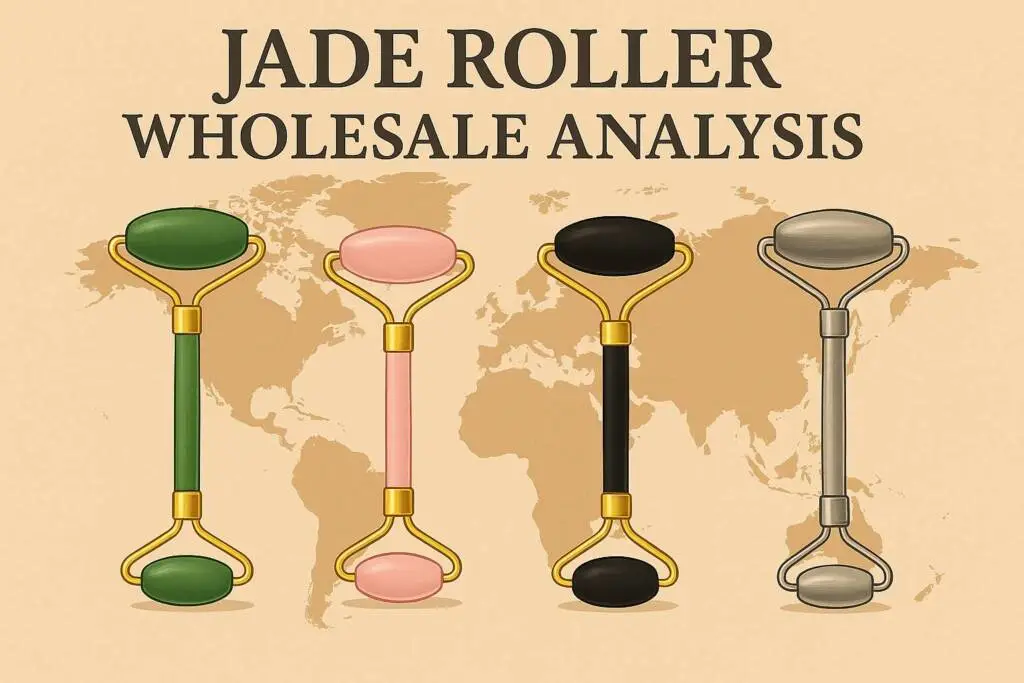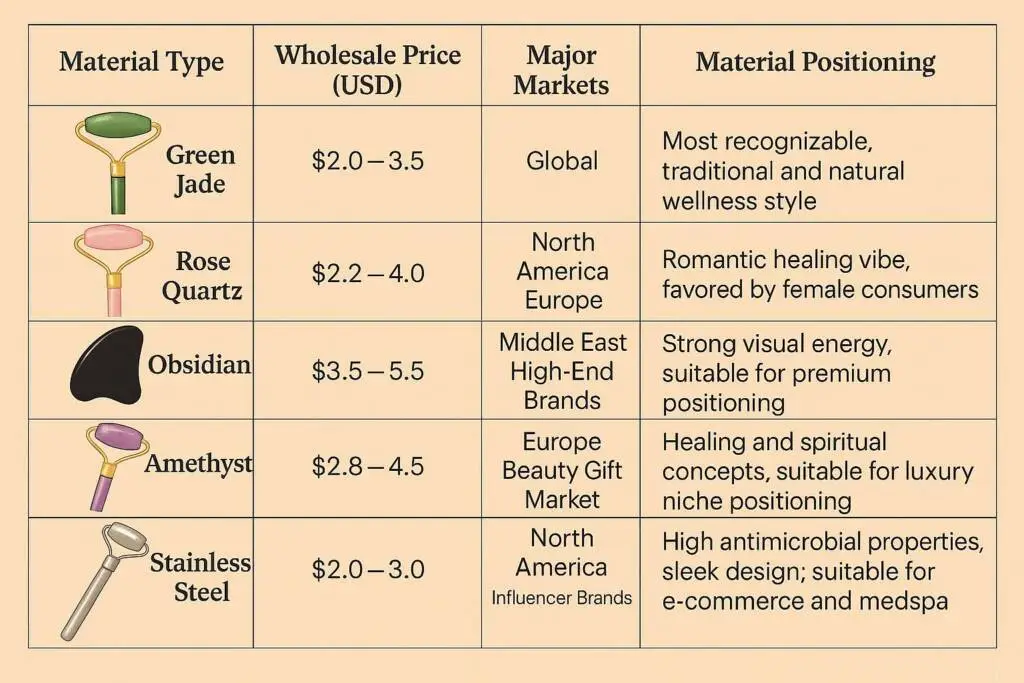
As the concepts of “natural skin care” and “home health care” continue to heat up, the jade roller has gradually gained more attention in the global beauty and health market. In particular, as an ancient facial massage tool, its characteristics of “Eastern tradition” and “modern consumer aesthetics” make it a key layout direction for wholesalers and brand owners. This article independently sorts out data from multiple market reports, combines regional demand and price trends, and provides you with a jade roller wholesale market guide with reference value.[1]
1. Overview of the Jade Roller Wholesale Global Market
According to market research firm data, the overall facial roller market is valued at approximately $500 million in 2025 and is expected to exceed $1.5 billion by 2033, with a compound annual growth rate of approximately 15%. [2]
Among them, jade rollers, as a mature category, occupy a large share in North America and Asia Pacific. Another report predicts that the entire scraping and roller market will reach more than $320 million by 2030, with stable growth, and a CAGR of 8–9% is expected from 2022 to 2030. [3], [4], [5]
2. Key Sales Channels and Material Selection
- Main sales channels: Direct-to-consumer brands (DTC), cross-border e-commerce platforms such as Amazon/Lazada, dropshipping models, and SPA/beauty salon retail.
- Mainstream materials: Jade is still the most popular, followed by rose quartz, obsidian, amethyst, and stainless steel cold therapy rollers.
3. Analysis of Jade Roller Wholesale Regional Market Demand
1. North American market (United States and Canada)
Demand is growing rapidly, and social platforms such as TikTok and Instagram have significantly driven search volume and sales of popular products. At the same time, wholesale buyers generally prefer natural jade materials and gift box packaging, which helps to improve brand quality and profit margins. The average wholesale price is expected to be between $1.8–4.5 USD/piece (FOB China).
2. European market (United Kingdom, Germany, France)
Environmental protection and quality regulations are strict, and consumers are sensitive to the source of raw materials and certification information. Rollers and scraping board sets are popular. The average wholesale price is mostly $2.5–5.2 USD/piece.
3. Asia-Pacific market (Japan, South Korea, Australia)
More inclined to minimalist design style, many local brands purchase Chinese manufacturing through white label or OEM mode, and import costs are strictly controlled. The wholesale price range is $1.6–3.5 USD/piece.
4. Middle East and GCC Region
The high-end hotel and SPA market has grown significantly, and luxury-oriented stones (such as obsidian and gold-plated ones) are very popular. The wholesale price can reach $3.5-7 USD/piece, and the price elasticity is relatively large.

4. Core Factors Affecting Wholesale Prices in 2025
- Stone authenticity and supply-demand price differences
Natural jade is affected by scarcity and quality, so its price is higher; synthetic or dyed stone has low cost but poor brand recognition. - Customization and packaging upgrade
Customized laser engraving, brand logo printing, gift box sets, etc. will increase unit costs. - MOQ requirements and tiered pricing
OEM factories often have pricing differences in the 500-1000 piece stage, and bulk purchases have more cost advantages. - Fluctuations in international logistics costs
The cost of sea and air freight exported from China fluctuates significantly, which will directly affect wholesale quotations. - Compliance and certification requirements
Buyers in Europe, North America and the Middle East often require raw material certification and quality inspection reports, which will also increase supplier costs.
5. Suggestions on the Landing Strategy of Wholesalers
- Material differentiation positioning: Rare materials such as obsidian and amethyst can be used to create a high-end market segment.
- Combined sales model: Combine rollers with scraping boards and essential oil gift boxes to increase customer unit price.
- Transparent material supply chain: Choose suppliers with material testing and certification to enhance market credibility.
- Seize seasonal marketing windows: Promote sales during gift seasons such as Valentine’s Day, Mother’s Day, and Christmas.
- Small batch proofing test: Especially for high-end materials, it is recommended to make sample test sales first to verify market response while controlling inventory risks.
In 2025, the jade roller wholesale market is showing the coexistence of regional fragmentation and high-end materials. Accurately grasping the preferences and price sensitivity of consumers in different regions will help wholesalers and brands formulate accurate pricing and product selection strategies.
Through the material and price benchmarks provided in this article, as well as regional demand analysis, you can more confidently formulate supply chain strategies, enrich product lines, and ensure profitability and customer trust in a highly competitive market.

